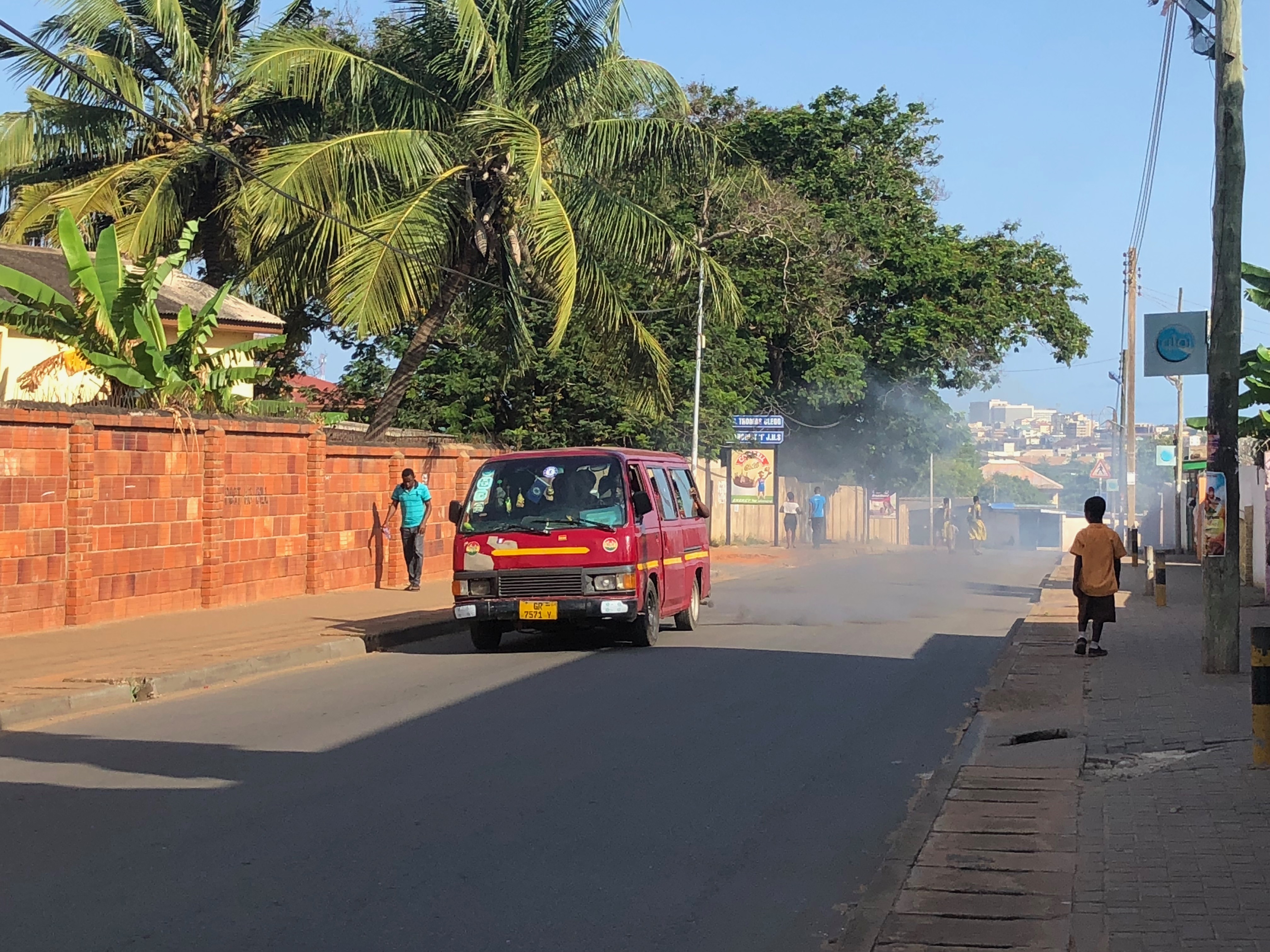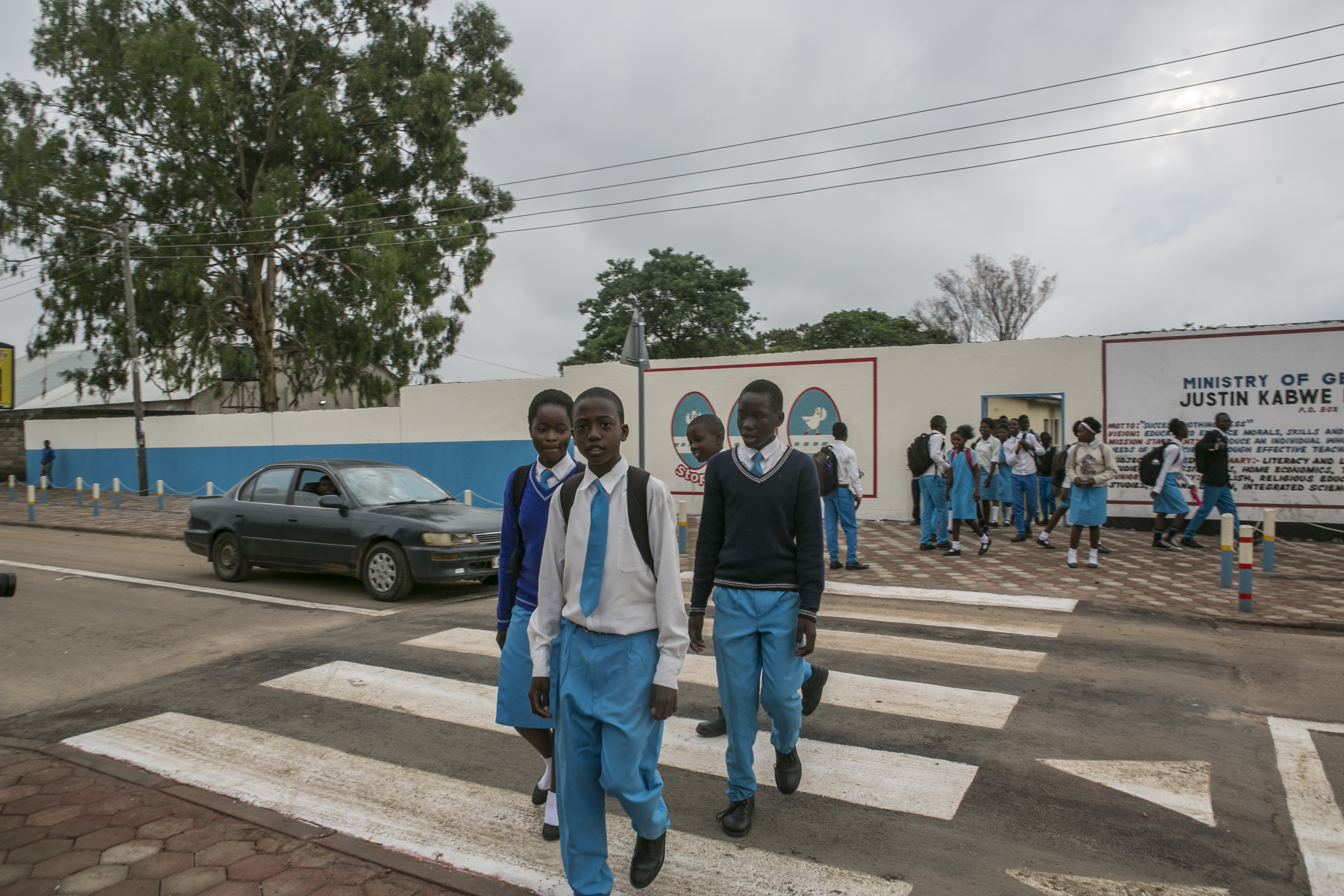Child Health Initiative: Safe and healthy journeys to school to reduce emissions and exposure to air pollution, enable active transport, and ensure safe roads
Description
CHI was launched in June 2016 and is a partnership of leading organisations sharing a vision that by 2030 every child should enjoy a safe and healthy journey to school. With a focus on policies for sustainable transportation, road safety, clean fuels and vehicles, and equitable urban development, CHI advocates for and supports practical activities to ensure every child has the right to: 1) use safe roads 2) breathe clean air 3) an education 4) explore in safety 5) protection from violence 6) be heard.
CHI brings together stakeholders from health, education, child rights, climate change, sustainable transport, governance, urban design and road safety to design and implement interventions that maximize a range of social, environmental and economic benefits, save lives and increase safe and active travel around schools. The absence of collaboration among these stakeholders means a continuation of the status quo: Approximately 286,000 children and adolescents die annually from outdoor air pollution globally, and 249,000 more die from road traffic injuries. Road traffic injuries cause children to miss school and suffer long-term health consequences, denying them access to a full life, and economic opportunities. When breadwinners are involved in a crash, families may no longer be able to afford school, denying their children access to education. When children are injured, parents often quit jobs to care for them, leaving families with little to no income. Safe roads are crucial to not only reducing poverty and improving access to education and healthcare, they also help achieve gender equality. Women and girls have been shown to experience significant sexual harassment on public transportation, but are often relegated to this transport mode as it is less expensive than private transport. Often serving the role of caretaker, women are responsible for bringing children to health appointments – but cannot do so if public transportation is unsafe - nor can they access economic opportunities. In many countries, girls take public transport to school, but may not do so if they feel unsafe. The most sustainable and active form of transport is our feet, but roads are not built for safe walking and cycling. Making roads safer enables active travel, reducing obesity, vehicle emissions, and improving health. Climate change will not be solved without sustainable transport – polluting vehicles contribute significantly to greenhouse gas emissions. CHI supports interventions to better understand real world emissions and develop policy responses to reduce them, helping people limit their exposure. Its initiatives show that improved vehicle design improves energy efficiency, cuts CO2 emissions, and reduces air pollution. Nearly all the Sustainable Development Goals are directly or indirectly linked to safe and sustainable roads and vehicles, including 1,3, 4, 5, 7, 10, 11, and 13.<br />
Cities that prioritize people over cars have been shown to have fewer road traffic fatalities and lower levels of air pollution. Cities focusing on speed management in particular – such as New York – have seen immediate road traffic injury reduction. Safe roads are also inclusive of people with disabilities, who have an equal right to move about and access services. Inclusive, safe, resilient, sustainable cities – goal 11 – start with safe roads. At the heart of CHI’s success is the revitalization of global partnerships, with strengthened means of implementation. CHI is focused on making connections between partners from different sectors to apply best practices across countries, targeting SDG interlinkages and double- or triple- duty actions that have multiple benefits, rather than striving to achieve them in silos.
CHI aims to achieve a ‘safe and healthy journey to school for every child by 2030,’ prioritized in the UN Habitat III New Urban Agenda, reflected in the WHO Convention on the Rights of the Child, and summarized in the Declaration of Every Child’s Right to Safe & Healthy Streets, launched with the Mayors of London and Accra in October 2017. CHI impacts the global agenda, for example through participation in high level sessions at the UN High Level Political Forum, World Urban Forum, World Health Assembly, UN High Level Meeting on Non-Communicable Diseases, and the first WHO Global Conference on Air Pollution and Health. At the grassroots level, initiatives range from improvements of infrastructure, road safety education, distribution of helmets, and the use of non-motorised modes of transport. A selection of best practices follows: In sub-Saharan Africa, Amend’s School Area Road Safety Assessments and Improvements (SARSAI) program reduces road traffic injuries around schools in nine countries, and includes evidence-based interventions, such as new pedestrian infrastructure. Pedestrians and cyclists are often unprotected. Together with motorcyclists, they comprise half of road traffic fatalities. Our partner iRAP (the International Road Assessment Program) surveyed 250,000 kilometres of roads in 60 countries showing that over 80% of roads with pedestrians and traffic over 40 km/h lacked formal sidewalks. The proportion was over 90% in sub-Saharan Africa, where 88% of roads with cyclists and speeds of over 40km/h lacked separate cycling paths. iRAP’s star ratings for pedestrians, cyclists, motorcyclists and vehicle occupants objectively measure the likelihood of a crash and its severity. 1-star is the least safe and 5-star is the safest. Amend and iRAP collaborate on the Star Rating for Schools (SR4S) project. In 2018, interventions began in Zambia, and is being carried out across Africa, Asia and Latin America, with 600 schools pilots across 36 countries. In Montevideo and Canalones, Uruguay, Fundación Gonzalo Rodríguez tested SR4S at 230 sites around 54 schools. In the US, CHI promotes Vision Zero for Youth, which has expanded to Mexico City, followed by Bogotá and India using the US Centers for Disease Control and Prevention’s (CDC) conflict analysis toolkit, combined with SR4S. Vision Zero for Youth helps cities adopt and implement a strategy to eradicate road traffic fatalities, starting with the most vulnerable and disproportionately affected population – youth. CHI supports the AIP Foundation to implement programmes to increase the proportion of people using motorbikes that wear a crash helmet. It is vital to cut emissions from vehicles and make them more efficient. CHI works closely with other programmes hosted by the FIA Foundation, such as the Global Fuel Economy Initiative (GFEI) which supports governments to implement policies for cleaner, more fuel efficient vehicles, and The Real Urban Emissions initiative (TRUE) which aims to improve data on real-world emissions in cities, to support policies to improve air quality. Share the Road, implemented by UN Environment, supports governments including Kenya, Uganda, Brazil, and Mexico to develop policies recognizing the role of walking and cycling in transport systems.
• Share the Road contributed to reviews of the non-motorized transport policies in Nigeria, Ghana, Zambia, Brazil and Mexico. Their support for the Lagos Metropolitan Area Transport Authority’s (LAMATA) leveraged €200,000 to develop sidewalks from the German Government backed Transformative Urban Mobility Initiative (TUMI). Additionally, the Africa Regional Toolkit for child health and mobility, in partnership with University of Cape Town and ITDP, was launched at the ITDP Mobilize conference in 2018. Thanks to efforts by AIP Foundation, Vietnam’s government will provide motorcycle helmets to 100% (2 million) of first graders in the 2018-2019 school year. After TRUE data showed that real-world emissions from London cabs were seven times laboratory limits, and responsible for 20% of all emissions in central London, the Mayor of London launched a new policy aiming to clean up taxis. Amend, in partnership with CDC, conducted a multi-year population-based control study impact evaluation of SARSAI, finding that the program results in a statistically significant reduction in the number of children injured in road traffic. For every 286 children whose schools participate in SARSAI, one road traffic injury is prevented annually. This is the first road safety program proven to reduce such injures among children in sub-Saharan Africa. Thanks to SARSAI over 12,000 pupils across eight countries in sub-Saharan Africa benefit from safer infrastructure. Sidewalks, speed reductions and traffic calmed crossings can reduce serious injuries by at least 25%, costing around $20,000 per school. Amend and iRAP’s Star Rating for Schools collaboration provides transparent measurement of progress. Once the new sidewalks, speed control, speed signs and traffic-calmed crossing are implemented, iRAP’s rating for the school can evolve from 1 to 5 stars for safety. A positive spill-over of combining these approaches is the opportunity to collect data which, in sub-Saharan Africa, is generally very challenging. Official data on injury and fatality in a school area is often unavailable, weak or incomplete. However, SARSAI and SR4S bolster data collection. Another CHI output is its toolkit to support and enable the delivery of ‘safe and healthy journey to school’ interventions. It combines best practices of organisations at all levels, globally. While it is too early to measure the toolkit’s effectiveness and reach, it is an important step in connecting partners globally, offering a practical tool to increase their impact and ability to implement safe and healthy journeys to and from schools.
CHI is catalysing change for safer and healthier cities around the world, starting with children. Every year, an estimated 350,000 children and adolescents are killed in road traffic crashes or by the effects of urban outdoor air pollution, to which road traffic is a significant contributor. Road traffic is the leading cause of death for adolescents worldwide. In many countries, urban design and road layouts are not designed for active travel, and high speed roads that divide communities can limit opportunities to access space to play or exercise. Adolescents also face additional risks around personal security, including on and around public transport, as well as other public areas such as parks or underpasses. In addition, vehicle-dominated cities experience significant air pollution caused by emissions from cars and trucks, and there is increasing evidence that this is having long-term health impacts. CHI, a global partnership hosted by the FIA Foundation, is calling for more policy focus on adolescents – to include them in discussions about street design and to bolster understanding of their mobility patterns around the world. The Initiative is placing youth at the center of the political agenda, and serving as an ally to help their needs be heard by policy leaders with the power to make change. Road traffic crashes and living with the impacts of poor air pollution, are not the only neglected area of adolescent health. With many countries experiencing a youth demographic bulge, it is time for the issues affecting young people – including mental health and sexual and reproductive health - to be given the policy attention. There is data analysis and policy announcement, but no follow-through, little action. The global health community’s policy journey is unfinished – it is time for neglected areas of adolescent health to follow in the footsteps of traditional diseases like HIV/AIDS, and secure the funding and attention they deserve. To fix this gap between evidence and action, we are calling for the following: A first ever UN Special Summit on Adolescent Health to raise visibility, build political commitment and deliver action and resources for neglected areas of public health; Specific indicators and funding for road traffic-related health policies and solutions within ‘Every Woman, Every Child’, the UN’s global strategy for child and adolescent health; Joint action with climate funds, to scale up ‘healthy streets’ policies designed to enable safe walking and cycling, improve air quality and reduce carbon emissions. Policy focus on reducing emissions from vehicles, both nationally and by city authorities. Our CHI campaign, ‘This is My Street,’ invites the general public to lend their voices, to be allies to our children, to end this preventable epidemic on wheels by signing up at mystreet.org. Together, we can ensure that all children have a safe and healthy journey to school – starting with evidence-based, scalable, replicable best practices – brought together by the Child Health Initiative to support the achievement of the Sustainable Development Goals, as well as international climate and urban commitments.
https://www.fiafoundation.org/blog/2018/november/life-saving-safe-schoo…
https://www.odi.org/sites/odi.org.uk/files/resource-documents/12132.pdf
https://www.fiafoundation.org/blog/2018/december/global-child-health-pa…
https://www.fiafoundation.org/blog/2018/november/to-advance-vision-zero…
https://www.fiafoundation.org/blog/2018/november/school-road-safety-eff…
SDGS & Targets
Deliverables & Timeline
Resources mobilized
Partnership Progress
| Name | Description |
|---|---|
| 17.14 | Enhance policy coherence for sustainable development |
Feedback
Action Network


Timeline
Entity
Region
- Europe
Geographical coverage
Photos


Website/More information
Countries
Contact Information
Natalie Draisin, Child Health Initiative
